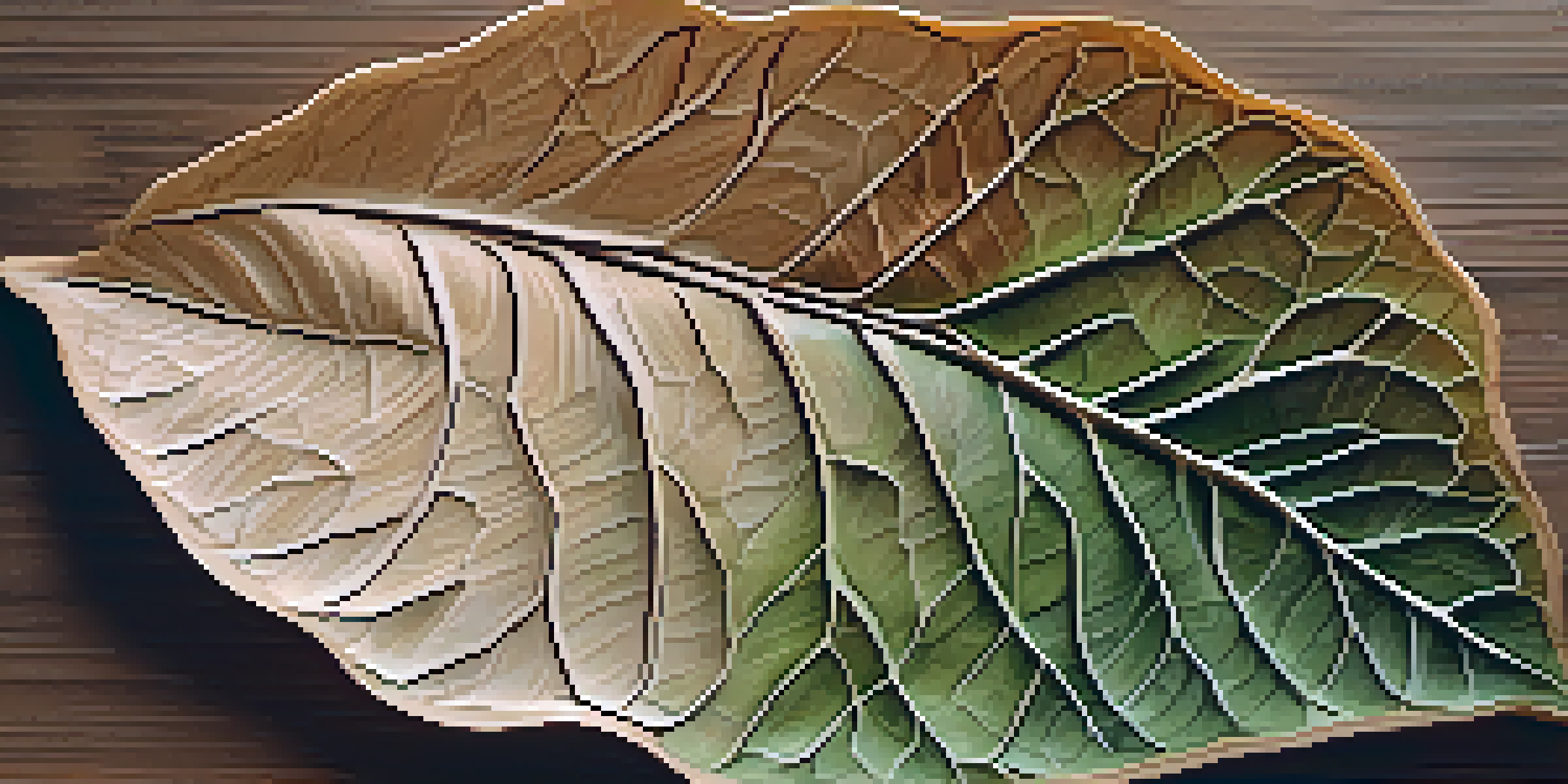Exploring Negative Space: Enhancing Carving Designs Effectively

Understanding Negative Space in Carving Design
Negative space refers to the empty areas surrounding a design. In carving, this space is just as important as the carved elements themselves. It helps to create balance and can draw attention to the main features of your work.
The most beautiful thing we can experience is the mysterious. It is the source of all true art and science.
Think of negative space as the silent partner in your design—it enhances what’s there without demanding attention. This principle can be found in many art forms, including painting and sculpture, where the background plays a crucial role in framing the subject.
By recognizing and utilizing negative space, carvers can create more dynamic and visually appealing pieces. It’s like finding harmony in a musical composition; the pauses often make the notes more impactful.
The Role of Contrast in Carving
Contrast is a powerful tool in highlighting both positive and negative spaces. When you carve deeper in some areas and leave others shallower, it creates a visual distinction that enhances the overall design. This interplay can make the carvings pop and feel three-dimensional.

For instance, imagine a leaf design where the veins are deeply carved while the surrounding areas remain flat. This contrast not only emphasizes the veins but also gives the illusion of depth, making the leaf appear lifelike.
Negative Space Enhances Design
Utilizing negative space is crucial as it creates balance and highlights the main features of a carving.
Using contrast effectively means understanding how light interacts with your carving. Shadows created by the depth of the negative space can add drama and interest to your work, inviting the viewer to explore more.
Creating Balance with Negative Space
Balance is essential in any design, and negative space is crucial in achieving it. When carving, distributing empty spaces evenly throughout your design can create a sense of stability. This prevents the artwork from feeling too heavy on one side.
Art is the most beautiful of all lies.
Think of a balanced scale; if one side is overloaded with detail, it tips the visual weight. By incorporating open spaces, you allow the eye to rest, which enhances the overall aesthetic of the piece.
A well-balanced carving not only looks stunning but also feels harmonious. It encourages viewers to engage with your work, inviting them to appreciate the intricacies of both the carved and uncarved areas.
Using Negative Space for Storytelling
Every carving tells a story, and negative space can play a pivotal role in that narrative. The empty spaces can suggest movement or convey emotions, adding layers of meaning to your design. This is where the magic happens, as viewers interpret the interaction between space and form.
For example, a carving depicting a bird in flight can use negative space to illustrate the air around it. The absence of detail in certain areas can evoke a sense of freedom and movement, allowing the viewer's imagination to fill in the gaps.
Contrast Adds Visual Impact
Implementing contrast between different depths in carving enhances the overall design, making elements pop and appear three-dimensional.
By intentionally designing with negative space, you have the power to guide your audience's interpretation. This can make your carvings not just visually appealing, but also rich in storytelling.
Exploring Shapes and Silhouettes
Negative space can transform simple shapes into striking silhouettes. By focusing on the outline created by the absence of material, you can craft designs that are both minimalistic and impactful. This technique allows the viewer to fill in the details mentally, creating a deeper connection.
Consider how a well-defined silhouette of a tree against the sky can evoke a sense of nostalgia. The negative space surrounding the tree enhances its presence, allowing it to stand out even more.
Utilizing silhouettes not only simplifies the carving process but also offers a bold visual statement. It’s a great way to experiment with the concept of less being more in your designs.
Techniques for Effective Negative Space Carving
To effectively incorporate negative space, consider starting with a clear plan. Sketching out your design can help you visualize how the spaces will work together. It’s essential to be intentional about where the empty areas will be to enhance your overall design.
One popular technique is the subtraction method, where you remove material to create negative space. This can be particularly effective in relief carving, where the depth and surface area interact dynamically.
Presentation Complements Artwork
Thoughtful presentation of a carving, including effective use of lighting, can significantly elevate the viewer's appreciation of the negative space and overall design.
Experimenting with different tools and techniques can also yield unique results. Play with varying depths and textures to see how they affect the perception of negative space in your carvings.
Showcasing Your Work: The Importance of Presentation
Once your carving is complete, presenting it thoughtfully can highlight the role of negative space. The way you display your piece can enhance the viewer's experience and appreciation. Consider using lighting to create shadows that emphasize the depth of your design.
For example, placing your carving against a contrasting background can make the negative spaces stand out even more. This not only showcases your craftsmanship but also reinforces the story behind your work.

In essence, the presentation is just as much a part of the artistic process as the carving itself. A well-thought-out display can transform your piece from an ordinary carving into an extraordinary work of art.